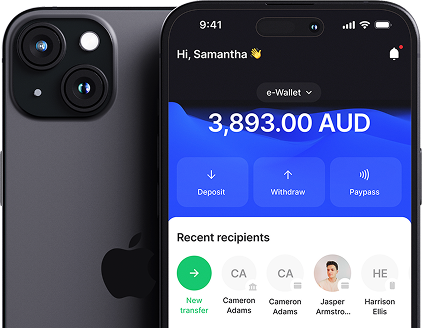Starting a Family in the Philippines
16 December 2024

First Trimester (Approx. PHP 20,000)
Starting a family is an exciting time – but it also comes with plenty of decisions and expenses. During the first trimester of pregnancy in the Philippines, costs can vary widely depending on your health, where you seek care, and whether any complications arise.
Some of the associated costs:
– Monthly check-up: PHP 600 – 1,500
– Supplements: PHP 300 – 3,000 per bottle
– Ultrasound: PHP 1,000 – 4,000 (or PHP 500 – 2,000 at a public hospital)
– Diagnostic tests (blood, urine, screenings): Additional costs depending on the test
Prenatal care during this stage is crucial for monitoring both maternal and foetal health. Public hospitals and government health centres may offer free prenatal check-ups under certain programs. Private clinics generally charge consultation fees up to PHP 2,000 per visit.
Doctors often recommend vitamins and supplements during this period, costing an average of PHP 500 – 2,000 per month.
Tip: If you’re supporting a family member in the Philippines from overseas, use e-Pocket to send money securely and get the most value for your transfer.
Second Trimester (Approx. PHP 20,000)
This middle phase of pregnancy (weeks 13–28) often brings more regular doctor visits and new expenses. While some early symptoms subside, additional tests and changes in daily life start to appear.
Some of the associated costs:
– Supplements: PHP 300 – 3,000 per bottle
– Maternity clothes: PHP 7,000
– Additional medical tests (e.g., pap smear, blood tests, ultrasound): Approx. PHP 5,000
Your doctor may request extra diagnostic tests during this trimester to monitor development and detect potential issues.
You’ll also likely need to invest in comfortable maternity clothing, especially if you’re working or regularly on the move.
Third Trimester (Approx. PHP 160,000)
This is when preparation intensifies – physically, emotionally, and financially. The third trimester comes with the highest number of expenses, as you begin getting ready for labour and life with a newborn.
Some of the associated costs:
– Crib: PHP 3,000
– Baby clothes: PHP 3,000
– Bedding: PHP 2,000
– Accessories: PHP 5,000
– Stroller: PHP 4,000
– Care products: PHP 15,000
Your body will undergo more noticeable changes and potential strain. As a result, you may need additional medical attention and support.
This is also when most families begin purchasing essentials for their newborn – which can add up quickly. From cribs and strollers to nappies and baby-safe care products, now’s the time to be financially prepared.
Delivery Costs: Public vs Private
Normal delivery (uncomplicated):
– Public hospital: PHP 25,000 – 70,000
– Private hospital: PHP 50,000 – 200,000+
Caesarean section (C-section):
– Public hospital: PHP 15,000 – 70,000
– Private hospital: Up to PHP 500,000 or more
The total cost will depend on:
– Hospital or facility
– Room type and length of stay
– Level of care needed
– Any medical complications
Tip: Always ask for a full breakdown of hospital packages and compare facilities. Costs can vary significantly depending on where and how you choose to give birth.
Starting a Family in the Philippines: Post-birth Costs
Giving birth may be over, but the expenses don’t stop. During your baby’s first year, there are several ongoing needs to budget for.
Some of the associated costs:
– Postnatal food and vitamins: PHP 4,000
– Diapers and baby wipes: PHP 1,000
– Check-ups and vaccinations: PHP 2,000
– Baby clothes: PHP 2,500
On average, families spend around PHP 15,000 – 20,000 in the first 12 months of their child’s life – though costs can easily go higher. Babies grow quickly, and clothing, feeding, and care routines constantly change.
Reducing Your Costs
There are several ways to keep costs manageable:
– PhilHealth: The Philippine Health Insurance Corporation offers partial or full reimbursement for select prenatal and maternity services.
– Maternity packages: Many hospitals and clinics provide fixed-price packages for prenatal care and delivery. These vary by location and facility, so shop around to find what works best for your budget.
– Government programs: Some government hospitals offer free or heavily subsidised childbirth services for low-income families. Nominal fees may still apply for certain services or supplies.
Always double-check with your chosen hospital for updated pricing, eligibility and support programs.
Recommended Hospitals for Starting a Family in the Philippines
While public hospitals are often the more affordable choice, they may have longer wait times or more limited facilities. Private hospitals tend to offer more comfort and specialist care but at a much higher cost.
Be sure to speak directly with each hospital you’re considering. Prices and package inclusions change frequently, and comparing several options is the best way to avoid surprises later.
Planning Ahead
Bringing a child into the world is exciting – and a bit overwhelming. Understanding the financial side of things is a huge part of being prepared.
To help with that, you can read our other blogs:
– Education in the Philippines
– Philippines Health Insurance: How to Choose the Right Plan
– Cost of Living in the Philippines
– Retirement in the Philippines
And if you’re large sending money, e-Pocket makes it easy. We complete get large transfers to the Philippines done, when others can not.
Conclusion
Starting a family in the Philippines is both a joyful and financially demanding experience. Costs vary widely depending on your health, choices, and location – but with the right information, you can plan ahead and make confident decisions.
We wish you and your growing family all the very best.




